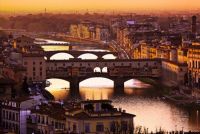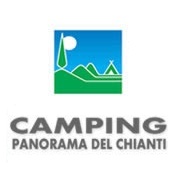
dal 1996 in continua innovazione tecnologica!
Sfrutta tecnologie avanzate per avere un sito web ottimizzato al 100%

FIRENZE
Famous for the immense political and economic power it wielded during the rule of the Medici Dynasty, Florence offered the world a stage for great artistic masters such as Michelangelo, Brunelleschi, Leonardo da Vinci and Galileo. However, Florence has its roots long before, when it rose and fell several times in the hands of the Romans, the lombardic tribe and others. Each successive age brought new architecture, art and creativity which are still evident in the streets, the many museums, churches, monuments and even the everyday life of this marvelous city.
Florence embodies the intellectual, artistic and cultural center of Tuscany... maybe even Italy. A visit to Tuscany could not be complete without a walk around Florence, photos from Piazzale Michelangelo, a stop at Ponte Vecchio and a stroll along the Arno River. A trip to Florence must include a visit to the Uffizi Museum, the Accademia and the imposing Palazzo della Signoria. To truly taste the flavor of Florence, one needs to enjoy a gelato in Piazza del Duomo, inhale the perfume of leather at the markets and eat a bistecca Fiorentina in the shade of Palazzo Pitti.
The churches Santa Croce, San Miniato, Santa Maria Novella and San Lorenzo house some of the more important tombs, mosaics and frescoes while the museums will delight you with artwork, bronzes and marble statues and many treasures.
SIENA
Siena is one of the most popular and visited places in Tuscany, a place extremely rich in history and art and with strong local traditions tied to its 17 districts (called “contrade”) and to the famous Palio di Siena, the biggest annual event that takes place twice each summer in the city. The city sits over three hills with its heart the huge piazza del Campo, where the Roman forum used to be. Rebuilt during the rule of the Council of Nine, a quasi-democratic group from 1287 to 1355, the nine sections of the fan-like brick pavement of the piazza represent the council and symbolizes the Madonna's cloak which shelters Siena.
The Campo is dominated by the red Palazzo Pubblico and its tower, Torre del Mangia. Along with the Duomo of Siena, the Palazzo Pubblico was also built during the same period of rule by the Council of Nine. The civic palace, built between 1297 and 1310, still houses the city's municipal offices much like Palazzo Vecchio in Florence. Its internal courtyard has entrances to the Torre del Mangia and to the Civic Museum. A climb up the over 500 steps will reward you with a wonderful view of Siena and its surroundings. The Museum offers some of the greatest of Sienese paintings.
PISA
The Leaning Tower, is the most famous Italian monument in the world. Together with the Cathedral and Baptistery, the Tower makes up of a complex of works that poet Gabriele D’Annunzio defined as “Miracles,” hence the baptizing of the piazza that hosts them as Piazza dei Miracoli.
The Tower’s magnificence, adjacent to the Cathedral of Santa Maria, stands out from the skyline of the other edifices in the piazza, appearing suspended above a green cloud (that is, the grassy knoll on which they reside). The Baptistery, or the site of Catholic baptism; the Cathedral, symbol of spiritual elevation; and the old graveyard (camposanto), a final resting place; represent, according to some, a sort of cosmic calendar: birth, life and death. The Cathedral or Duomo, and the Baptistery, all white in color, are an unrivaled example of the Pisan Romanesque, particularly because the interior of the church features contrasting Arabesque influences.
Not only culture, but strong seaside traditions are also native to Pisa, with beach tourism making a recent comeback here, particularly at Marina di Pisa and the rest of the nearby Tuscan littoral that composes part of the Natural Park of Migliarino, San Rossore and Massaciuccoli.
LUCCA
Lucca is one of the cities most loved all of Tuscany.
Most of the attractions in Lucca today show its ancient history: from the trace of the Roman amphiteater that can be seen in the shape of the Piazza dell'Anfiteatro to the archeological remains under the 12th century church of Saints Giovanni and Reparata, to the various towers and villas from the 12th to 16th centuries.
the walls that surrounded the old town were maintained. As the walls lost their military importance, the top of the walls became a pedestrian promenade, today one of Lucca's main attractions. The area around the walls is well taken care of, with green grass and trees everywhere along the walls. They have in essence become a park that surrounds the city and blocks out more modern life. Here you can enjoy a bike ride around the entire perimeter, a stroll as you enjoy a gelato or simply a period of rest from sightseeing on one of the many shaded benches that line the main walkway.
Other top attractions include the Piazza of San Michele with its beautiful Church of San Michele in Foro, the Basilica of San Frediano as well as the Clock Tower and Guinigi Tower, to name just a few.
AREZZO
Arezzo is one of the wealthiest cities in Tuscany, due to its tradition in gold-smithery. Located in southeastern Tuscany, it sits atop a hill at the crossroads of four valleys: the Val Tiberina, Casentino, Valdarno and Valdichiana.
Even though the Medieval center was destroyed during World War II, Arezzo still has plenty of monuments, churches and museums remaining that offer visitors a chance to step back into history. The Church of San Francesco is probably the most famous in Arezzo, with the incredible Early Renaissance fresco cycle by Piero della Francesca depicting the Legend of the True Cross. You then head uphill to Piazza Grande, then on to the Medicean Fortress, visit the Cathedral dedicated to San Donato, then back down to the Roman Amphitheater and the Church of San Domenico with the wooden Crucifix by Cimabue.
Visit Cortona, Anghiari, Monterchi and Sansepolcro (if you love Piero della Francesca) and the beautiful castle of Poppi; these are just some of the most beautiful towns in the province of Arezzo.
